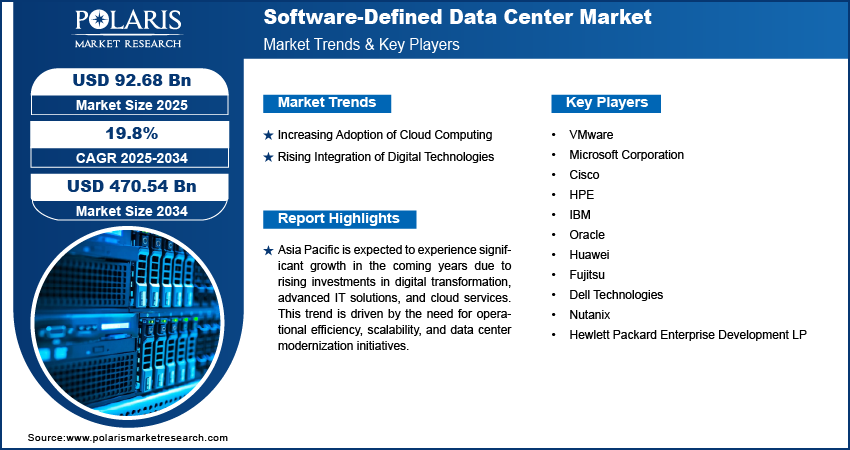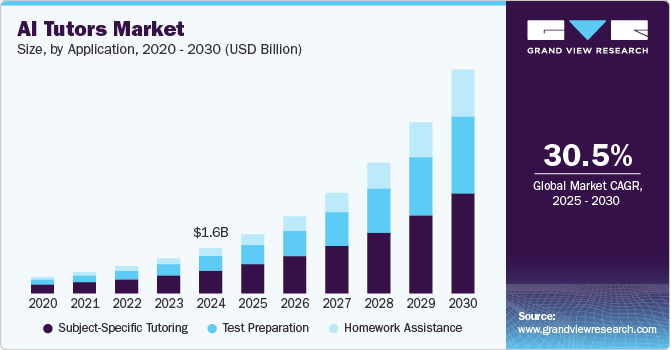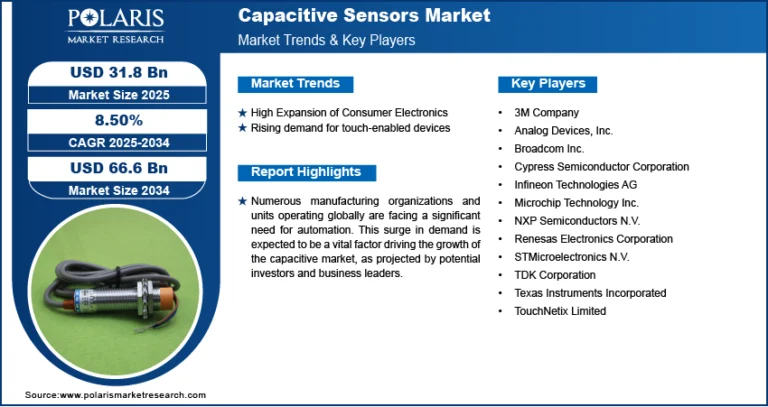Software Defined Data Center Market Size Worth USD 470.54 billion by 2034 | CAGR: 19.8%

The software defined data center market size was valued at USD 77.44 billion in 2024, and it is estimated to reach USD 470.54 billion by 2034, exhibiting a CAGR of 19.8% from 2025–2034.
Trends & Insights
- Rapid Adoption of Hybrid and Multi-Cloud Models: SDDC enables seamless integration and management of on-premise and cloud computing resources, making it a core component of hybrid strategies.
- Increased Automation and Orchestration: SDDC solutions are increasingly equipped with AI and machine learning to optimize workload distribution and infrastructure performance.
- Growing Popularity of Hyper-Converged Infrastructure (HCI): Combining compute, storage, and networking in a single software-defined platform is simplifying deployment and management.
- Edge Data Center Deployment: The rise of edge computing is prompting the deployment of lightweight, software-defined infrastructures closer to data sources.
Market Size & Forecast
- Market size value in 2025 – USD 92.68 billion
- Revenue forecast in 2034 – USD 470.54 billion
- CAGR – 19.8% from 2025 – 2034
Request a Free Sample Research PDF:
Market Overview
The Software-Defined Data Center (SDDC) market is witnessing robust growth driven by the need for greater flexibility, scalability, and automation in data center infrastructure. SDDC is an architecture that virtualizes all elements of the data center—compute, storage, and networking—and delivers them as a service through software. This enables more agile and cost-efficient IT operations. Enterprises across industries are adopting SDDC to modernize legacy systems, improve resource utilization, and support digital transformation initiatives.
Market Growth Drivers
- Demand for Agility and Scalability: Businesses require flexible IT environments to rapidly deploy applications and scale infrastructure dynamically.
- Cost Optimization Goals: SDDC helps reduce capital and operational expenditures by improving resource utilization and minimizing hardware dependency.
- Support for Digital Transformation: As companies embrace digital services, SDDC provides the backbone for high availability, speed, and adaptability.
- Advancements in Virtualization Technologies: Innovations in server, storage, and network virtualization are fueling the development of efficient SDDC solutions.
Market Challenges
- Complex Integration with Legacy Systems: Migrating to Software Defined Data Center from traditional infrastructure can be technically challenging and resource-intensive.
- Security and Compliance Concerns: Virtualized environments demand advanced cybersecurity strategies and adherence to complex regulatory standards.
- High Initial Setup Costs: Although cost-effective long-term, upfront investments in software, training, and skilled personnel can be significant.
- Lack of Skilled Workforce: Implementing and managing SDDC infrastructure requires specialized skills in virtualization, automation, and cloud technologies.






